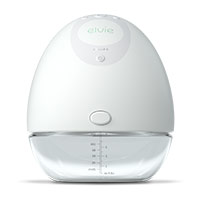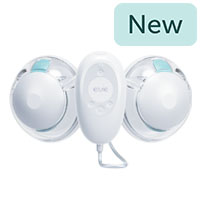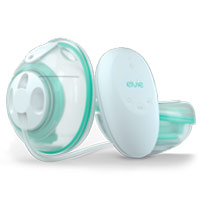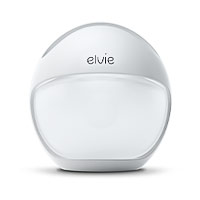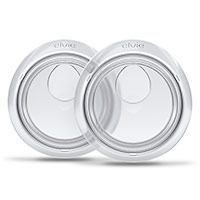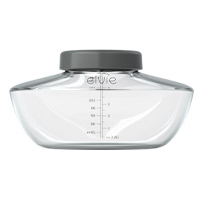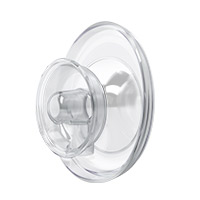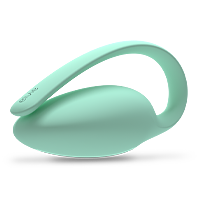Breastfeeding is not an exact science but a natural process of the body and unique to each woman. If you’ve ever wondered how it works, don’t worry, we’re here to explain. From the very first days of your pregnancy your hormones begin to change, human chorionic gonadotropin (hCG) is what triggers the plus sign on your pregnancy test. During pregnancy, your breasts start producing colostrum known as the early milk. After childbirth, having skin to skin contact with your baby tells your body that it needs to produce milk and breastfeed. When the baby sucks at the breasts, two hormones are released: prolactin and oxytocin. While the first helps to make more milk, the second one helps the breast release milk to the nipples to feed your baby.
Feeding may sound simple but it’s not always the easiest thing to do. Breastfeeding changes from one woman to another but there are similar difficulties that women encounter. A study published in Pediatrics revealed that 92% of moms experience at least one concern about breastfeeding three days after birth. 52% have concerns about the difficulty for the infant to feed and latch, 44% about feeling pain when breastfeeding and 40% worry about milk quantity. Many women also experience other difficulties that can be avoided with a few simple breastfeeding tips.
Worried about not having enough breast milk?
You might sometimes think you don’t have enough milk. If you think this is you, first acknowledge if your baby gets enough milk but also if they are fed enough. There are few signs to know if your baby gets enough milk such as regular wet and soiled nappies and swallowing sounds. Check the NHS website to learn more. If your baby is not fed enough, you can try to increase your breast milk supply in different ways:
Make sure that your baby is latched properly. This allows more milk to flow rather than staying in your breast. This means more milk for baby.
Massaging your breasts before and during breastfeeding or breast pump also helps to increase the flow because it helps to empty the milk from your breasts.
If your baby doesn’t drink everything, you can still pump after to drain all the milk. According to Beth Graham, a UK IBCLC lactation consultant, “if they are having trouble latching the baby, pumping will enable the baby to have breast milk while they learn how to breastfeed effectively. The important thing is to manage the breasts and the baby as 2 projects – the breast tissue needs to be stimulated so it produces milk at an increasing rate so when the baby is ready to breastfeed correctly there is enough milk to exclusively breastfeed”.
The morning is also the moment of the day when you produce the most breast milk. Breastfeeding or breast pumping at that time of the day can help you get more milk.
If your baby has nipple confusion or doesn’t manage to latch properly
Nipple confusion happens when your baby has difficulties to latch on and change back to the breast after being fed with bottles. It can happen because it is easier and faster to get milk from a bottle than on the breast. To avoid that, most experts recommend introducing bottles only when your baby is able to latch on correctly and you feel that you and baby have got the hang of things.
If your breasts leak
Don’t panic! Even if stains from breast leaks can be embarrassing for women, it’s more than common. There are two reasons why you may leak. Firstly, it may mean that there is too much milk in your breasts, secondly, because it comes from “the letdown reflex” a natural reaction your body has when you see or think about your baby. This can come in useful when you are away from your baby and need to breast pump, simply holding an item of their clothing or looking at a photograph of them is enough to stimulate your milk to flow.
But if your breasts are leaking from overproduction and it becomes uncomfortable for you, you might want to breastfeed more regularly or pump between the feeds. Again, if your baby latches on well, it should reduce the risk of breast leaks, if she doesn’t you should vary the breastfeeding position until you find the most suitable one for you. Breast pads are also a solution to limit the feeling of wetness and the stains on your clothes provided that you change them often.
If you get breast infections, unusual breast symptoms or if you feel pain when you breastfeed
Even if breastfeeding is natural, it can bring about some issues. Breast engorgement is one of them: it happens when there’s a surplus of milk in your breasts. Beth Graham, IBCLC consultant, recommends to breastfeed or pump regularly to avoid that. The NHS also explains that breast engorgement can happen in the early days but also when your baby starts to eat more solid food. During breastfeeding, ducts (the little tubes in the breasts that bring the milk to the nipple) can become blocked and can lead to mastitis, an inflammation in the breast. To prevent this, keep on breastfeeding, try to find a better position to attach your baby, express milk by hand and try to warm your breasts with a warm cloth to help improve the milk flow. If it’s not getting better, contact your health practitioner, this is something you should take care of fast, if not treated, it could lead to a breast abscess that can require an operation.
If you have sore or cracked nipples
Sore nipples can happen a few days after you started to breastfeed because the baby might latch on only on the nipple instead of latching on the areola, the dark zone around your nipple. Better positioning and attaching your baby well will limit the risk of getting sore or cracked nipples. Breast engorgement or infections such as mastitis or thrush infection can also explain this issue.
Whether you’re in the UK or the US, you can get more advice on breastfeeding and ask your questions in workshops and meetings that happen around you:
In the UK
Before the birth of your child, you can attend antenatal classes at a Children’s Centre and learn how to take care of and feed your baby, get advice on your pregnancy and chat with professionals. Here’s how to find the closest Children’s Centre to you.
The NHS offers a lot of resources on breastfeeding: NHS Bot Start4Life Breastfeeding Friend will reply to your questions through Facebook Messenger, Google Home or Amazon Alexa.
You can also find support at Baby Café, a network of breastfeeding locations where you can get advice on breastfeeding from health professionals, practitioners and breastfeeding counselors. You don’t need an appointment and can join the groups during opening hours. Check out their website to find your closest one.
In the US
Many organizations and breastfeeding centers offer support groups. The Nursing Mothers Advisory Council organizes training classes with volunteer counselors who support breastfeeding moms. La Leche League International offers local support groups worldwide and in the different states in the US. You can also find a local support group and get advice from accredited breastfeeding counselors, listed by state and location on the website of Breastfeeding USA.
Social media is also an opportunity to share your experience, get advice and meet women who breastfed or are currently breastfeeding. In the US, Getboober is an app that helps you find lactation consultants and get advice.
For more information on breastfeeding and breast pumping, check out how to take care of your breasts while breastfeeding and breast pumping here. For more expert advice from IBCLC lactation consultant Beth Graham, check out our Youtube channel here.


